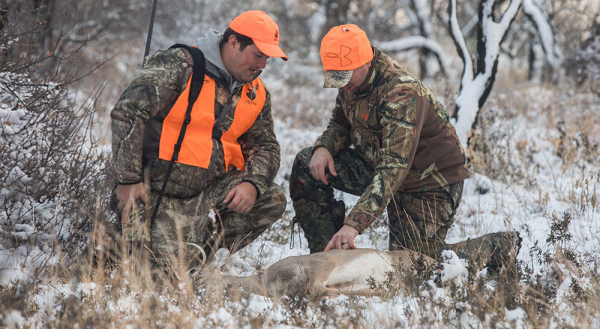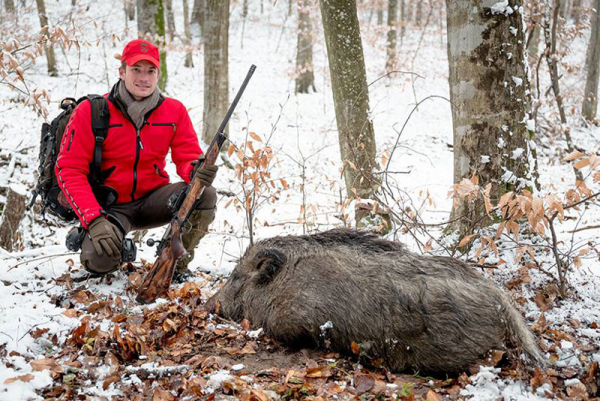By Glen Wunderlich
Over the next month or so, throngs of hunters will step out of their daily routines in hopes of bagging a whitetail deer. Some will spend many hours sighting in with their chosen firearms or archery gear; some will not. Some will travel hundreds of miles or more to arrive at their hunting grounds; others hunt near home. Some will pursue only monster bucks, while others will take any legal deer – even antlerless deer. And, with the myriad methods employed, all levels of competence will be afield from expert to novice.
However, there is one term which all hunters should feel compelled to be known by and that is sportsman or woman, as the case may be. So, let’s define the word before proceeding. According to Mr. Webster a sportsman is a person who can take loss or defeat without complaint, victory without gloating, and who treats his opponents with fairness. Relative to hunting, a sportsman, it follows, is a person who can go home empty-handed and be satisfied. The sportsman, therefore, chooses only shots with a very high likelihood of his making. Adopting certain principles leads to discipline in the field, which translates into fairness to the quarry.
Nobody wants to see injured animals. Granted, it happens sometimes, but we should constantly strive to minimize bad shots. So, it behooves a sportsman to develop the single-shot mentality, knowing that some situations permit the prey to live another day. He knows there can be no wild shots and that bullet or arrow placement is the key – not firepower.
Another way of putting this into perspective is to stay within one’s personal limits. To do this, however, takes some understanding of what these limits may be. Sitting at a bench and shooting with sandbag rests at known distances will give feedback to the hunter relative to the accuracy of a gun and load. Under these ideal conditions, the shooter/hunter gains knowledge that can be translated to the field.
Once afield, though, things get complicated when a person’s fingers get cold, the wind is howling, the heart is pumping at maximum levels, because the quarry is no longer a stationary sheet of paper but a buck massive enough to grace the cover of your favorite outdoor magazine. This is when a hunter must bring himself back to reality and must decide if he will be guided by principle.
A sportsman can be content as he witnesses the outdoor world waking up or going to sleep. He is content being one with nature before the sun comes up when sounds in the dark may be mysterious. He marvels at the sight of a coyote, a wood duck or even a squirrel as they go about their daily business of survival.
At the same time he is totally prepared to take home his prize. But, if luck doesn’t go his way, he believes his patience will be rewarded another day.
If you make your goal to be satisfied with the outdoor experience that you have – no matter what the day may bring – by definition, you will have become a true sportsman.



 The large spruce limbs were hung over the ropes and woven together and tied where necessary. A few snips with my pink pruners and I was proud as a peacock with my invention after a couple of hours of enjoyable work.
The large spruce limbs were hung over the ropes and woven together and tied where necessary. A few snips with my pink pruners and I was proud as a peacock with my invention after a couple of hours of enjoyable work.

 DENVER (October 8, 2019) – Last year, Outdoor Channel introduced North American audiences to one of the world’s most popular and exciting hunting methods – driven hunting – with Wild Boar Fever 9. Now, Wild Boar Fever X presented by Aimpoint, the most-celebrated driven boar hunting series ever produced, is available on Sportsman Channel on Sundays at 5 p.m. ET. Additionally, catch up on seasons 1-9 of Wild Boar Fever all on MyOutdoorTV.In the last several decades, mild winters accompanied with changing agricultural practices have created a scenario in which the wild boar population in Europe, has exploded. Wild boar cause billions of dollars of damage to agriculture and resources each year. Controlling the population of wild boar in Europe is a practice steeped in the centuries’ old tradition of driven hunting.
DENVER (October 8, 2019) – Last year, Outdoor Channel introduced North American audiences to one of the world’s most popular and exciting hunting methods – driven hunting – with Wild Boar Fever 9. Now, Wild Boar Fever X presented by Aimpoint, the most-celebrated driven boar hunting series ever produced, is available on Sportsman Channel on Sundays at 5 p.m. ET. Additionally, catch up on seasons 1-9 of Wild Boar Fever all on MyOutdoorTV.In the last several decades, mild winters accompanied with changing agricultural practices have created a scenario in which the wild boar population in Europe, has exploded. Wild boar cause billions of dollars of damage to agriculture and resources each year. Controlling the population of wild boar in Europe is a practice steeped in the centuries’ old tradition of driven hunting.
 Michigan is rich with opportunities to hunt a variety of upland game birds this month, with several seasons already open and other openers on the way.Currently open are ruffed grouse and woodcock hunting. Ruffed grouse season runs through Nov. 14 and then reopens Dec. 1-Jan. 1, while woodcock season is open through Nov. 4.
Michigan is rich with opportunities to hunt a variety of upland game birds this month, with several seasons already open and other openers on the way.Currently open are ruffed grouse and woodcock hunting. Ruffed grouse season runs through Nov. 14 and then reopens Dec. 1-Jan. 1, while woodcock season is open through Nov. 4.

 COLUMBUS, Georgia — Wear the
COLUMBUS, Georgia — Wear the